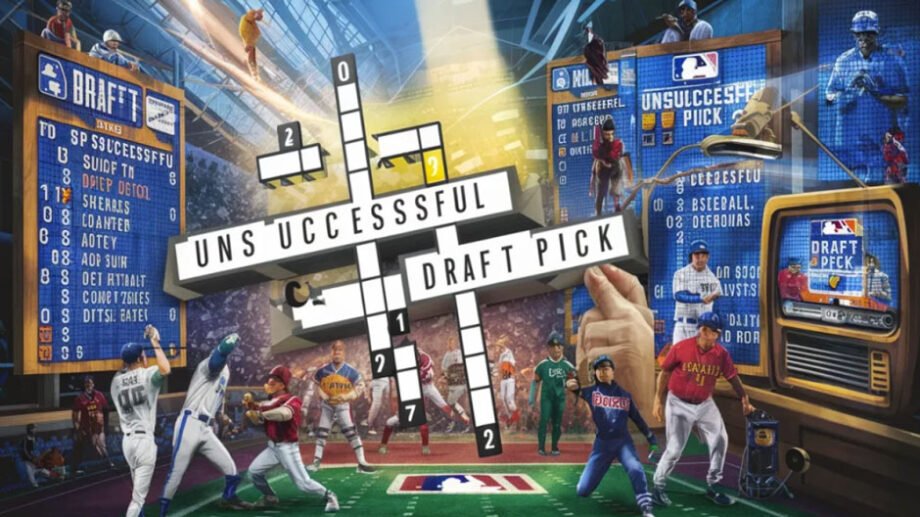Contents
A Comprehensive Exploration of Unsuccessful Draft Picks
Greetings, sports enthusiasts! In the realm of professional sports, the draft stands as a pivotal event where teams seek to bolster their rosters with fresh talent. However, not every selection results in a triumphant victory. In this blog post, we embark on an in-depth journey into the intriguing and often disheartening domain of unsuccessful draft picks. Join us as we dissect the factors contributing to these disappointments, scrutinize real-life examples, and unveil strategies for teams to rebound from less-than-ideal selections. Grab your jersey, for we are about to uncover the secrets of navigating through an unsuccessful draft pick!
Unveiling the Factors Behind Unsuccessful Draft Picks
When it comes to drafting players, numerous factors can contribute to an unsuccessful pick. One significant factor is inadequate scouting and evaluation of a player’s skills and potential. Failure to conduct thorough assessments of a player’s abilities and suitability within the team’s framework can lead to disappointment in the long run.
Another critical factor is the oversight of red flags or character concerns. Neglecting to address off-field issues or behavioral problems during the drafting process can result in distractions for the team and adversely affect on-field performance.
Injuries also play a substantial role in unsuccessful draft picks. Selecting a player with a history of injuries without considering the long-term ramifications can impede their development and hinder their overall success in the league.
Furthermore, the lack of adaptability by both the player and coaching staff can contribute to an unsuccessful draft pick. Without proper support or a willingness to adjust strategies based on individual strengths, a player’s growth may be stunted, ultimately impacting team performance.
Examining Real-Life Case Studies of Unsuccessful Draft Picks
Every year, NFL teams invest significant time and resources into selecting top talent during the draft. However, not every pick unfolds as anticipated. One prominent case study of an unsuccessful draft pick is JaMarcus Russell, chosen first overall by the Oakland Raiders in 2007. Despite high expectations, Russell struggled with consistency and work ethic, ultimately leading to his departure from the team.
Another notable example is Ryan Leaf, selected second overall by the San Diego Chargers in 1998. Leaf’s career was marred by poor on-field performance and off-field issues that hindered his ability to thrive at the professional level. These instances serve as cautionary tales for teams when evaluating prospects during the draft process.
It is imperative for organizations to learn from past missteps and meticulously assess players’ character, skills, and compatibility within their system to avoid similar pitfalls in future drafts.
Assessing the Impact of Unsuccessful Draft Picks on Teams
The repercussions of an unsuccessful draft pick extend far beyond the immediate season for a team. It can impede the team’s performance, disrupt chemistry, and impose financial burdens. The player may fail to meet expectations, leading to frustration among fans and management alike.
Moreover, an unsuccessful draft pick can influence future draft strategies, prompting teams to become more risk-averse or excessively cautious in their selections. This may limit the team’s ability to uncover game-changing talent and construct a competitive roster.
Additionally, the morale of players and coaching staff may suffer as a result of an unsuccessful draft pick. It can instill doubts about the team’s decision-making process and undermine trust within the organization.
An unsuccessful draft pick is not merely a setback for one season; it can have enduring repercussions that impact the team’s success for years to come.
Strategies for Mitigating Unsuccessful Draft Picks
To avoid unsuccessful draft picks, teams must establish a robust scouting and evaluation process. This entails conducting thorough research on players’ backgrounds, performance metrics, and character attributes. Leveraging advanced analytics can offer valuable insights into a player’s potential success at the professional level.
Another vital strategy is to prioritize compatibility within the team’s existing roster and playing style. Drafting based on immediate needs versus long-term potential can minimize the risk of selecting a player who may struggle in the team’s system.
Furthermore, conducting comprehensive interviews with prospects can unveil crucial intangibles such as work ethic, coachability, and passion for the game. Cultivating strong relationships with college coaches and mentors can also provide valuable insider perspectives on a player’s attitude and commitment.
Fostering open communication among scouts, coaches, and front office staff is essential in making informed draft decisions that align with the team’s overarching goals and vision for success.
Navigating Recovery from an Unsuccessful Draft Pick
After realizing that a draft pick did not yield the desired results, teams often grapple with the challenge of rebounding from this setback. One key strategy is to focus on nurturing and developing talent within the existing roster. By investing in player development programs and providing avenues for growth, teams can cultivate a solid core of players who can positively contribute to the team’s success.
Additionally, teams can explore alternative avenues for acquiring talent, such as through trades or free agency. This enables them to supplement their roster with seasoned players who can provide immediate impact and help fill any gaps left by an unsuccessful draft pick. Establishing a diverse and dynamic team composition is imperative for long-term success in professional sports.
Another crucial aspect of recovery is learning from past errors and leveraging them as valuable lessons for future drafts. Teams should conduct thorough evaluations of their scouting processes, decision-making criteria, and overall draft strategies to identify areas for improvement. Adapting and evolving based on past experiences is paramount to remaining competitive in the fast-paced world of professional sports.
Conclusion: Enhancing Draft Success Through Continuous Improvement
Understanding the intricacies of unsuccessful draft picks is essential for teams seeking to enhance their performance in future drafts. By dissecting the factors contributing to a pick’s failure and analyzing real-life examples, teams can glean valuable insights into making better choices.
To mitigate the risk of unsuccessful draft picks, teams should prioritize thorough scouting, extensive research, and considerations beyond a player’s talent, such as their fit within the team’s system. Additionally, fostering a supportive environment for young players to develop and thrive can maximize their potential and increase their likelihood of success.
In cases where an unsuccessful draft pick has already been made, it is crucial for teams to focus on finding ways to help the player improve or potentially trade them for assets that better align with their needs. By remaining proactive and adaptable, teams can recover from a failed pick and continue building towards success in future drafts.
Learning from past mistakes is indispensable for refining drafting strategies and enhancing overall team performance. With diligent analysis, strategic planning, and a commitment to continuous improvement, teams can minimize the risk of making unsuccessful draft picks and increase their chances of selecting impactful players who will contribute positively to their organization.





